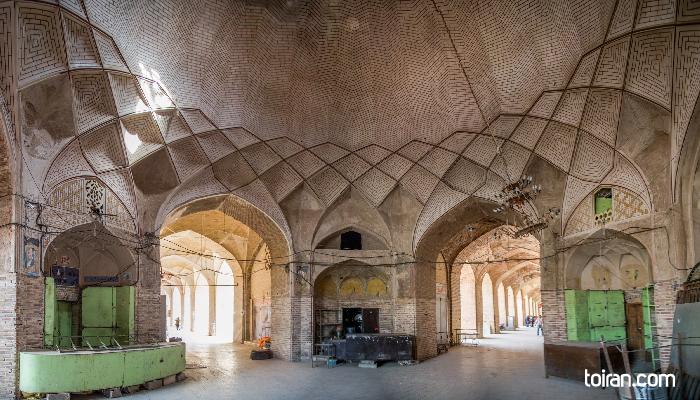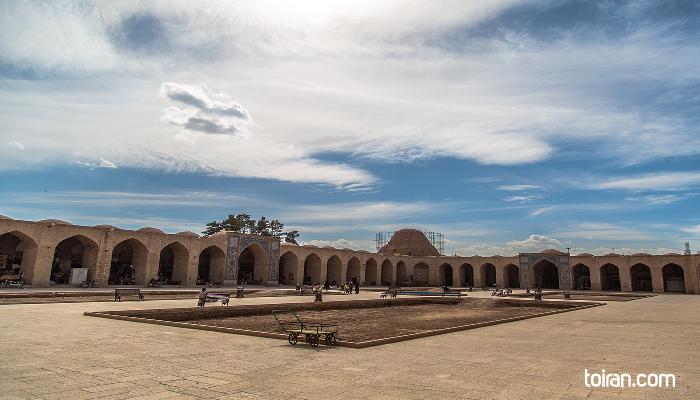The Ganjali Khan Complex was built by and named after a Safavid (1501–1736) commander who became the governor of Kerman in 1569. Located at the heart of the city next to the city’s Grand Bazaar, the complex spans an area of 11,000 square meters and consists of a square, bazaar, bathhouse, mosque, Ab-Anbar (water reservoir), mint and a monument.
Ganjali Khan Square is characterized by its brick arches, tielwork, pool and lush landscape. The square is surrounded by the bazaar on three sides and the Ganjali Khan Monument on one side.
Ganjali Khan Bazaar is a three-kilometer long street that has Arg Gate, the entranceway to Kerman, on one end and Vakil Mosque Gate, the exit way from the city, on the other. The bazaar includes caravanserais, rows where different professions worked and numerous shops.
Ganjali Khan Bathhouse, which is located on the southern side of Ganjali Khan Square and in the middle of the Kerman Grand Bazaar, was built in 1611. The bathhouse spans a 1,300-square-meter area and includes a façade, entrance hall, changing room, Hashti (vestibule), Garm Khaneh (hot chamber), pool, private bath and boiler room. The bathhouse has wall paintings as well as moqarnas, tilework and stucco relief decorations. Ganjali Khan Bathhouse was in use until nearly 60 years ago.
Like the men’s bathhouse, Ganjali Khan Women’s Bathhouse has a changing room and hot chamber. The bathhouse has a dome mounted on solid stone pillars. This bathhouse is currently the location of the Anthropology Museum of Kerman.
Located on the eastern side of Ganjali Khan Square and next to the Ganjali Khan Monument is the Ganjali Khan Mosque. The mosque has a square-shaped dome chamber with a dodecagonal lightwell at its center. The underdome is adorned with moqarnas and other decorations popular in the Safavid era.
Ganjali Khan Mint is an octagonal, four-iwan structure built on the northern side of Ganjali Khan Square. This Mint has elaborate stucco decorations, a central dome and balconies on either side. The Mint manufactured coins until the end of Ganjali Khan’s time in power. The Mint is currently the location of the Coin Museum of Kerman.
Ganjali Khan Ab-Anbar was built by Ganjali Khan’s son Alimardan Khan and has decorations typical of the Safavid era.
Located on the eastern side of Ganjali Khan Square, Ganjali Khan Monument is a four-iwan structure built in two stories and has the date 1598 inscribed on its façade. The monument’s eastern, northern and southern iwans are adorned with stucco reliefs and paintings. Shops were located on the first floor of the monument and its second floor held office spaces used by merchants. Mo’arraq tiles with Safavid motifs have been used to decorate the exterior of this monument.





